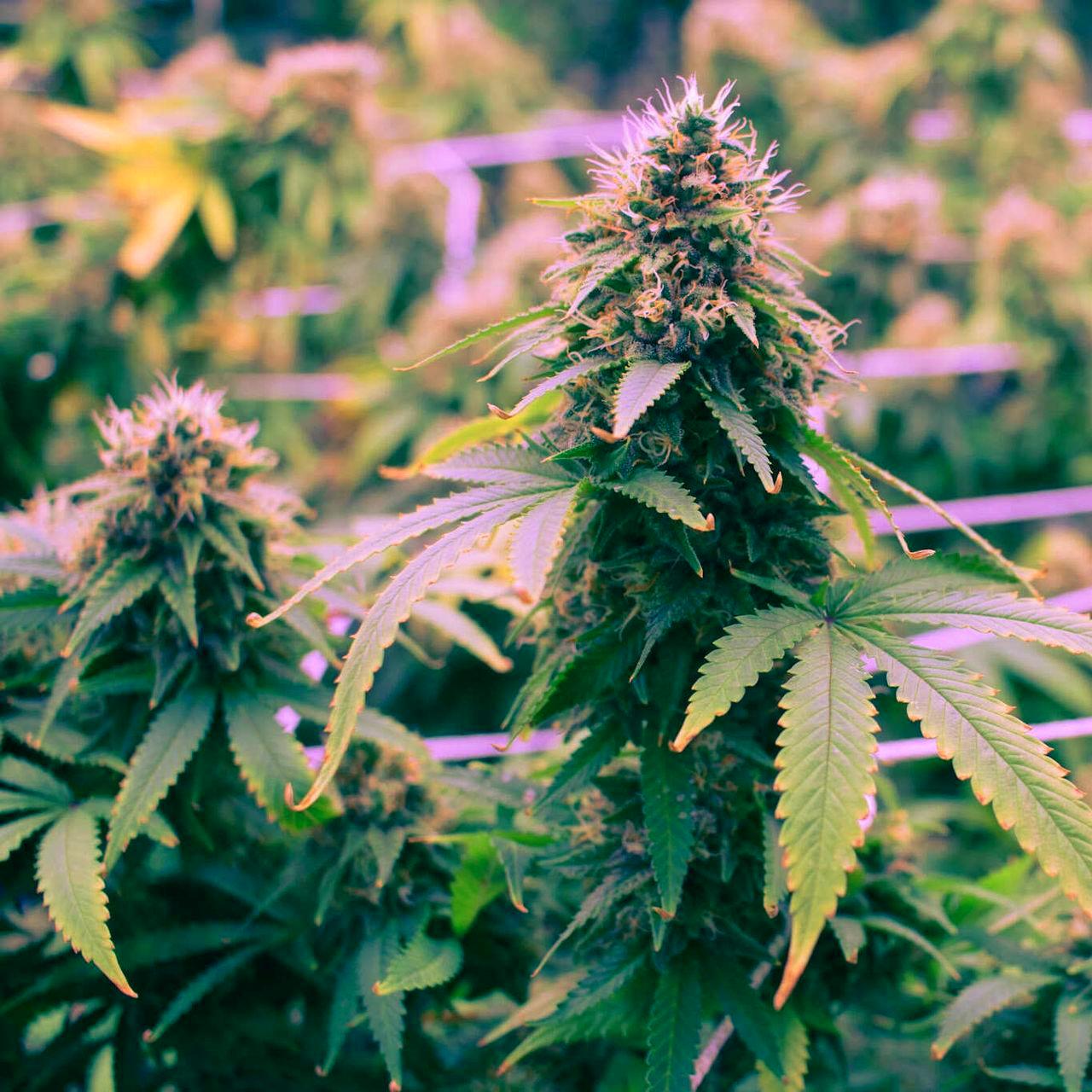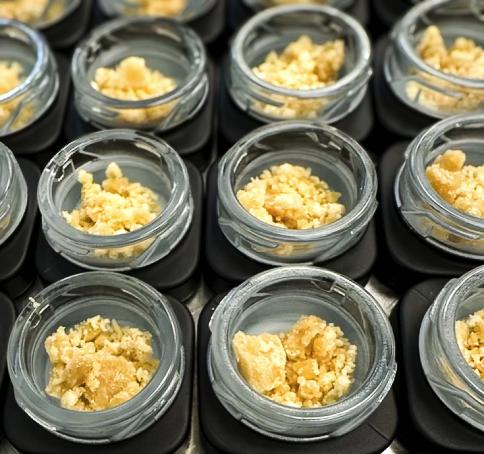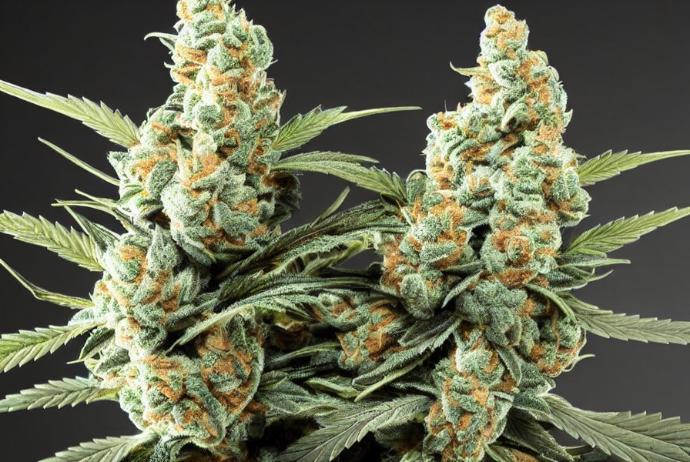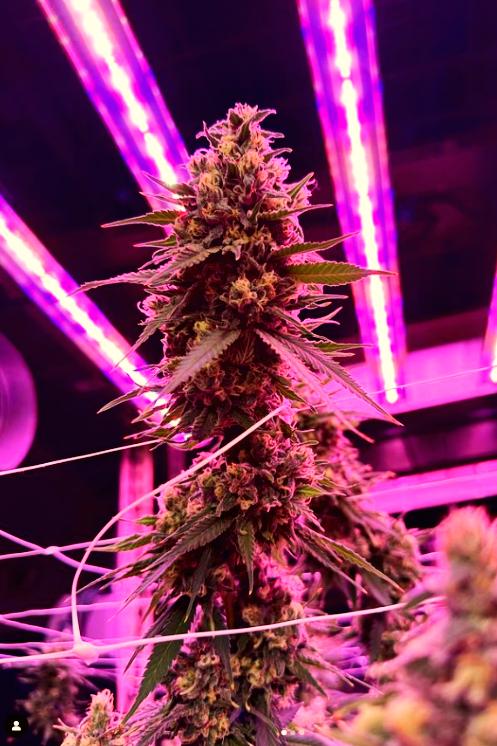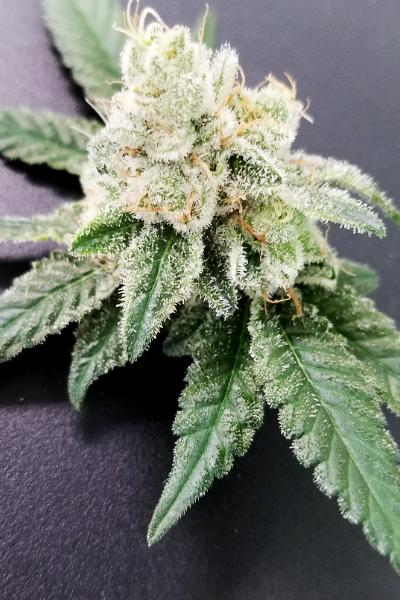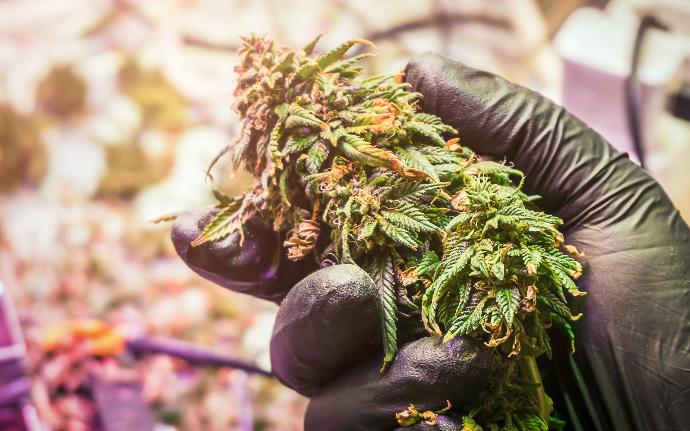Introduction to Pinene
Pinene, a vital terpene known for its distinctive pine-scented aroma, is an organic compound that permeates the world of flora with its presence in an array of plants including, but not limited to, conifers, numerous herbs, and even some citrus fruits. As one of the primary terpenes in the cannabis plant, pinene contributes to the complex interplay of scents and flavors that characterize different cannabis strains. This terpene is not only integral to the aromatic identity of cannabis but also enriches a diverse spectrum of other plants with its refreshing scent.
In addition to its role in cannabis, pinene is celebrated for its historical and cultural significance across various domains. From ancient times to modern-day applications, pinene has been utilized in everything from traditional medicinal practices to contemporary aromatherapy and the perfume industry. Its sharp, clean aroma has made it a favorite among essential oil enthusiasts, and it continues to be studied for its potential applications and benefits in holistic practices.
Beyond its aromatic capabilities, pinene plays an ecological role in the natural defense mechanisms of plants. Serving as a repellent to pests while attracting pollinators, pinene helps ensure the survival and propagation of its host plants. This dual function underscores the importance of pinene not just for its human uses but also for its critical ecological contributions.
As we delve deeper into the study of terpenes like pinene, we uncover layers of utility that span ecological, cultural, and commercial fields. This widespread relevance makes pinene a standout compound in the natural world, bridging the gap between traditional uses and potential modern applications.

Pinene's Significance in Cannabis
Pinene stands out as a defining terpene within the cannabis community due to its influence on the sensory aspects of cannabis products. It is primarily identified in two structural forms: alpha-pinene and beta-pinene, each contributing uniquely to the olfactory experience of cannabis. These isomers are pivotal in shaping the aroma and flavor profiles of various cannabis strains, enriching them with notes ranging from sharp, fresh pine to milder, sweet undertones.
Alpha-pinene is typically associated with the fresh, earthy scent of pine needles or rosemary, providing a robust and invigorating olfactory experience. Beta-pinene, while similar, offers a slightly more nuanced aroma reminiscent of dill, parsley, or hops. This variation allows for a rich tapestry of scents within cannabis cultivars, enhancing the consumer's sensory experience and influencing their choice of strains.
The presence of pinene in cannabis does more than just affect its smell and taste. The interaction of pinene with other terpenes and cannabinoids in the plant may influence the overall profile of the cannabis, contributing to the complexity of flavors and effects. This interaction is often referred to as the "entourage effect," where the synergistic interplay between compounds potentially modulates the overall experience of the cannabis product.
Understanding the role of pinene in cannabis also assists cultivators and breeders in developing strains that target specific terpene profiles to cater to consumer preferences. Whether aiming for a strain that invigorates and refreshes or one that soothes and relaxes, the manipulation of pinene levels can significantly alter the final product's appeal.
Diverse Applications of Pinene
In the Food and Beverage Industry
Pinene is a favored ingredient in the food and beverage sector due to its distinctive pine-like flavor, which adds depth and complexity to culinary creations. It is especially prevalent in the production of beverages where its fresh, aromatic notes can be used to enhance the sensory qualities of craft beers and artisan spirits. Additionally, pinene is employed in flavoring a variety of food products, lending a natural, woodsy taste that complements savory and some sweet dishes.
In Personal Care and Cosmetics
The personal care and cosmetics industries leverage pinene for its aromatic properties, incorporating it into products such as perfumes, lotions, and soaps. Pinene's fresh and clean scent makes it an excellent choice for formulating skincare and body care items that aim to evoke the invigorating essence of nature. Moreover, its use in aromatherapy products helps in creating a soothing and revitalizing environment, enhancing the user's sensory experience.
In Traditional and Folk Medicine
While this section does not claim any medical benefits, it's notable that pinene has been historically recognized in various cultural practices for its aroma and preservative qualities. In traditional settings, plants high in pinene were often utilized in herbal preparations and remedies. Today, this tradition continues in some cultures that value natural botanical ingredients for their characteristic scents and preservation properties.
In Industrial Applications
Pinene also finds utility in industrial applications, particularly as a natural organic solvent in cleaning products and as a chemical precursor in the synthesis of other more complex organic compounds. Its strong solvent properties make it useful in the manufacture of adhesives and coatings, providing effective natural solutions that are increasingly preferred over synthetic alternatives in eco-friendly product formulations.
These varied applications demonstrate pinene’s versatility and its ability to bridge traditional uses with modern technological and commercial applications. Whether enhancing the flavor profile of a gourmet dish, enriching the fragrance of a cosmetic product, or serving as a functional ingredient in industrial solutions, pinene continues to be a valuable natural resource across diverse industries.
Natural Sources of Pinene
While widely recognized for its presence in cannabis, pinene is abundant in several other natural sources:
- Pine Trees: The quintessential source of pinene, providing the classic pine aroma.
- Rosemary: A culinary favorite, rich in pinene, valued for both its flavor and fragrance.
- Basil: Another herb loaded with pinene, contributing to its spicy-sweet fragrance profile.
- Eucalyptus: Known for its refreshing and invigorating scent, rich in pinene.
- Orange Peels: Surprisingly, orange peels contain notable amounts of pinene, adding to the citrusy aroma.
These sources highlight the versatility of pinene and its widespread occurrence in nature, playing significant roles in ecological, culinary, and therapeutic contexts.
The Origins and History of Pinene
Pinene is a terpene that has played a significant role in ecological and human history, adding depth and intrigue to its story. Found naturally in an array of plants including conifers like pine trees, herbs such as rosemary and basil, and even some citrus fruits, pinene has always been integral to the plant kingdom's interactions with its environment.
Ecological Role
In nature, pinene helps protect plants by acting as a natural repellent against pests while also attracting pollinators. Its strong aroma can deter herbivores and harmful insects, thus serving as a critical component in the plant's survival strategy. Additionally, pinene can help to communicate with other plants, signaling environmental changes or threats, which allows for a communal response among plant populations.
Historical Uses
Historically, pinene-rich plants have been harnessed for various human uses. For centuries, cultures around the world have utilized the resinous sap of pine trees, which is rich in pinene, for its preservative and antiseptic properties. This sap was used in traditional building materials, naval applications for sealing ships, and even in medicinal preparations.
In regions where rosemary is native, it was not only prized for its culinary uses but also for its potential to preserve food, thanks to its high pinene content. This preservation quality was especially valuable before the advent of modern refrigeration techniques. Similarly, the refreshing and clean scent of pinene made it a popular choice in early medicinal and aromatic therapies, practices that have persisted in various forms to this day.
Cultural Significance
Pinene also holds cultural significance in many societies. For instance, the burning of pine wood, which releases pinene into the air, has been part of religious and ceremonial practices, believed to aid in purification and healing. This practice showcases the deep spiritual and health-related contexts in which pinene-rich substances were used historically.
Understanding the origins and historical context of pinene not only enriches our appreciation of this terpene but also highlights its multifaceted role across different epochs and cultures. From ecological interactions to traditional practices and cultural ceremonies, pinene’s presence has been woven into the fabric of human history, marking its significance well beyond its current uses in modern industries.
The Future of Pinene
As we look toward the future, the role of pinene in various industries appears poised for significant growth and innovation. The evolving consumer preference for natural, plant-derived products is likely to enhance pinene's prominence in the marketplace, particularly as awareness of its versatile applications continues to expand.
Innovation in Consumer Goods
The demand for natural ingredients in consumer goods is surging, and pinene is well-positioned to play a crucial role in this trend. Its distinct aroma and flavor profile make it a sought-after ingredient in the food and beverage industry, where it can offer a unique touch to natural flavorings. In the realm of personal care, pinene is increasingly valued for its fresh, clean scent, contributing to the development of eco-friendly and chemically conscientious products that appeal to health and environmentally conscious consumers.
Sustainability and Environmental Impact
Sustainability is becoming a central focus in production practices across industries, and pinene's natural origin offers significant advantages. As an organic compound that can be sustainably sourced from abundant plant materials, pinene represents a key ingredient in the development of environmentally friendly products. Its role in industrial applications, such as biodegradable solvents and natural adhesives, underscores its potential to contribute to more sustainable manufacturing practices.
Advances in Extraction and Synthesis Technologies
Technological advancements in extraction and synthesis processes are expected to improve the efficiency and cost-effectiveness of pinene production. These innovations will not only enhance the purity and quality of pinene-derived products but also expand its applications. As extraction technologies become more refined, the ability to capture and utilize pinene from a broader range of plant sources could diversify its uses even further.
Research and Development
Continued research into the properties and potential applications of pinene is crucial for unlocking its full potential. While traditionally valued for its aromatic qualities, the exploration of pinene's functional properties could lead to novel uses in pharmaceuticals, food preservation, and beyond. The ongoing study of terpenes like pinene will also deepen our understanding of their roles in plant biology and their interactions within ecosystems, which could have broad scientific implications.
Conclusion
Pinene, a dynamic and multifaceted terpene, continues to make significant strides across various industries, highlighting its enduring appeal and versatility. As research into pinene and its capabilities progresses, it is clear that this terpene will play an increasingly prominent role in shaping future trends and innovations within the natural products sector.
Expanding Influence in the Market
The growing consumer interest in natural, eco-friendly products is a powerful driver for the expanded use of pinene. This trend aligns with the broader shift towards sustainability in consumer behaviors, manufacturing practices, and corporate policies. As businesses respond to this demand, pinene's role is likely to extend beyond its current applications, potentially opening new markets and opportunities.
Enhancing Consumer Experiences
Pinene's ability to enhance the sensory attributes of products—from the piney freshness in perfumes and cleansers to the subtle nuances in flavored beverages—makes it a valuable component in the consumer goods industry. Its natural origin and pleasant aroma contribute to its appeal, offering product developers a versatile ingredient that meets the rising demand for authenticity and sensory richness in consumer products.
Fostering Innovation and Sustainability
The anticipated advancements in technology and extraction methods are expected to improve the sustainability and efficiency of using pinene. These developments will not only benefit the environment but also help industries reduce costs and increase the accessibility of pinene-rich products. Furthermore, as the understanding of pinene's ecological functions deepens, its applications in green chemistry and sustainable practices are expected to broaden, reinforcing its role in environmental stewardship.
Collaboration and Research
Looking forward, the collaborative efforts between researchers, industry experts, and environmentalists will be crucial in unlocking the full potential of pinene. Continued exploration of its properties, interactions, and benefits can foster innovative applications and solutions that leverage pinene's natural advantages. These collaborative initiatives will likely yield insights that could revolutionize how pinene is viewed and used across various sectors.
In conclusion, pinene's journey from a simple terpene found in pine trees and cannabis to a cornerstone of multiple industries encapsulates its remarkable versatility and potential. As we continue to explore and leverage the unique properties of pinene, its impact on the future of natural products and sustainable practices is poised to be significant and far-reaching. This evolution of pinene from a fragrant molecule to a key player in market trends and environmental solutions exemplifies the transformative power of natural compounds in modern industry.


